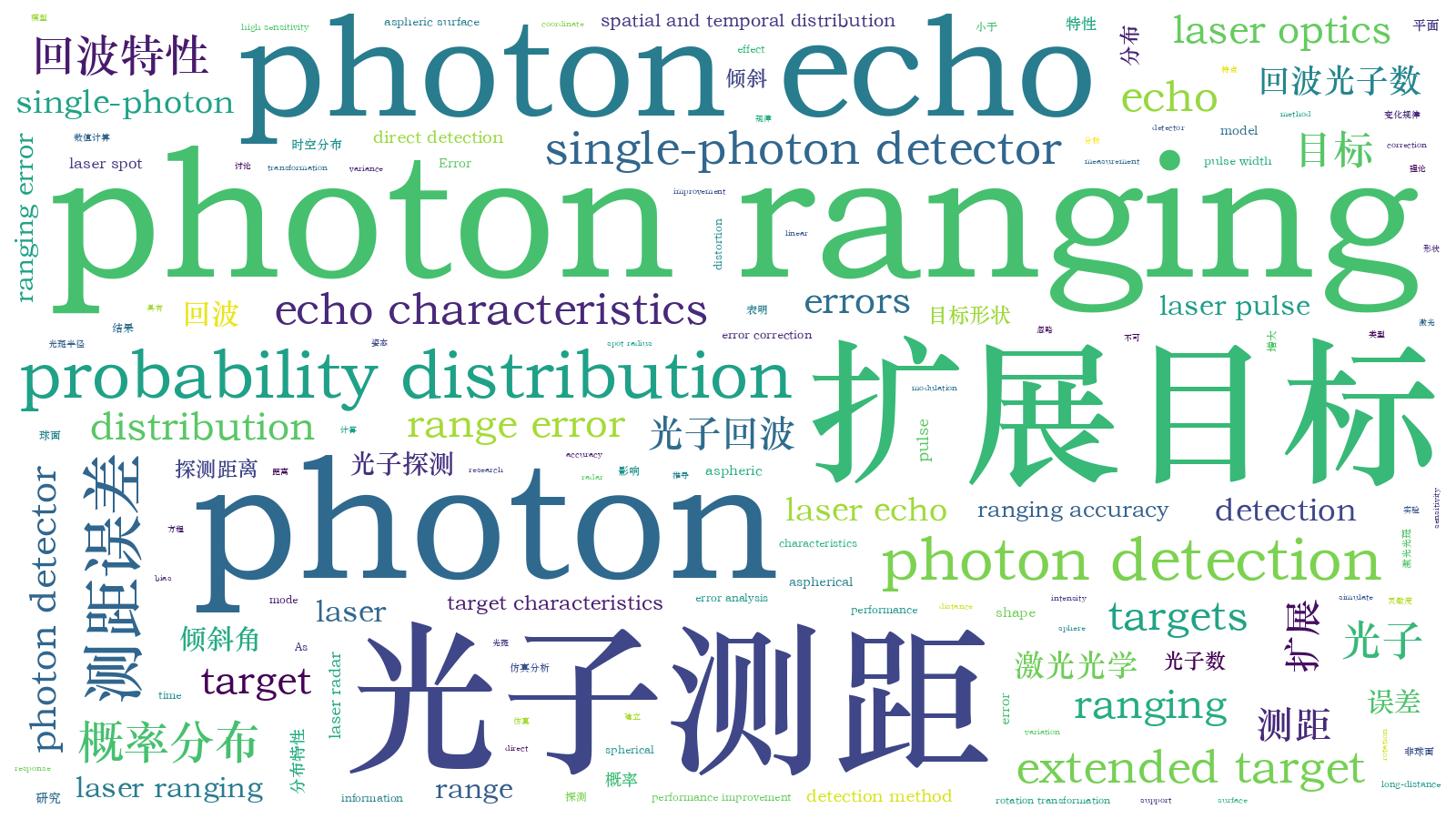扩展目标光子测距回波特性及误差研究  下载: 1186次
下载: 1186次
Objective Photon ranging exhibits the advantages of high sensitivity and long-distance detection. Compared with laser ranging in the linear mode, the photon detection exhibits the first photon bias effect owing to the dead-time of the single-photon detector, which results in greater distortion of the probability distribution of photon echo. This distortion is closely related to the intensity and distribution of the laser echo. There is a close relationship between the target shape and posture and the probability distribution of photon echo. As a result, the range errors in photon ranging caused by the target shape and posture cannot be ignored. Most researchers have focused on analyzing the modulation effect of target characteristics on the laser pulse echo. However, there is a lack of research on the range errors of extended targets in the photon-detection mode. Therefore, we discuss the relationship between the target shape and inclination and photon ranging for three typical extended targets.
Methods Based on the Poisson probability response model and the traditional laser radar equation, the probability distribution model for the photon detection of an extended target is established herein. Combining this with the coordinate-rotation transformation formula, the general probability distribution equation mixed with spatial and temporal distribution at different inclinations is derived for the three typical extended targets: a plane, a sphere, and an aspheric. Experimental results reveal that the probability distribution of this photon echo is consistent with the numerical results. We then simulate and analyze the differences in the photon echo probability distribution and laser pulse echo characteristics of the three typical extended targets. Finally, the variation between the range errors in photon detection and the types and inclinations of the extended targets is discussed theoretically.
Results and Discussions Compared with the laser pulse echo, the probability distribution of the photon echo moves forward as the inclination increases, and the variance decreases. At the same time, the pulse width of the laser echo modulated by the extended plane is wider than those of the extended spherical and aspherical surfaces. Furthermore, the probability distribution of the photon echo of the extended plane moves forward the most. The photon ranging error of the extended targets exponentially increases with the increase in inclination. The average number of echo photons is 3.9, the laser spot radius of the target is 0.2 m, and when the inclination is less than 20°, the difference in the photon ranging errors between the three extended targets is less than 1.23mm. As a result, the range errors in the photon detection caused by different extended target types could be ignored. In addition, when the inclination is greater than 20°, the photon ranging accuracy of the extended plane is most affected by the inclination, whereas that of the aspheric surface is the least affected. When the target inclination is 70°, the photon ranging errors for the extended plane and spherical and aspheric surfaces are 12.5cm,10.6cm, and 8.9cm, respectively.
Conclusions Based on the center-of-mass detection method, the range errors in the direct detection vary slightly with the inclination of the extended targets, which is negligible compared with those in photon ranging. The range errors in photon detection increase as the inclination of the target increases. The photon-ranging errors for the extension plane are most affected by the inclination. If the inclination was smaller, the photon ranging of the extended target would be almost independent of the shapes of the extended targets. These conclusions provide a theoretical basis for the photon ranging performance and error analysis and provide a reliable information support for range-error correction and performance improvement. Furthermore, the posture information of the extended target can be acquired by combining the equation of photon echo probability distribution with the measurement results of the photon echo.
侯阿慧, 胡以华, 赵楠翔, 方佳节, 张鑫源. 扩展目标光子测距回波特性及误差研究[J]. 中国激光, 2021, 48(4): 0401016. Ahui Hou, Yihua Hu, Nanxiang Zhao, Jiajie Fang, Xinyuan Zhang. Echo Characteristics and Error of Extended Target for Photon Ranging[J]. Chinese Journal of Lasers, 2021, 48(4): 0401016.







